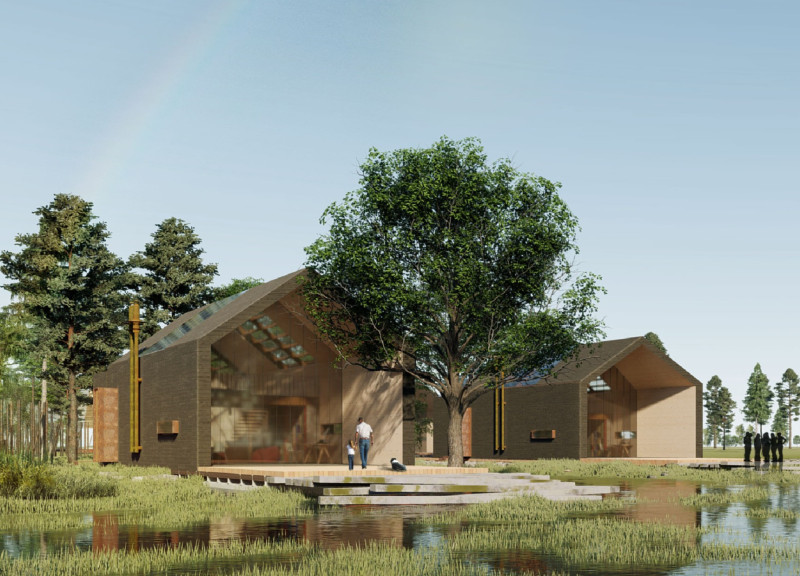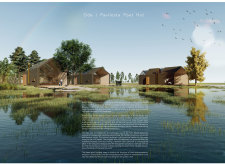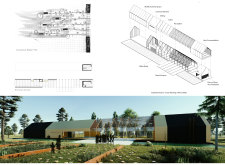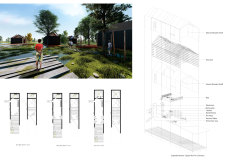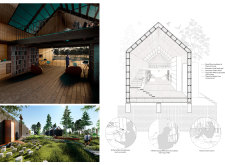5 key facts about this project
The Pavilosta Poet Hut is located along the coast of Latvia, where sandy and rocky beaches meet dense forests. It serves as a retreat for poets, offering a quiet space that encourages creativity and reflection. The design aims to create a strong bond between architecture and nature, allowing visitors to experience a tranquil environment that enhances their artistic pursuits.
Design Concept
The concept centers on the unique features of the Latvian landscape. The huts are designed to fit naturally into their surroundings, promoting an atmosphere suitable for deep thought and inspiration. With a focus on simplicity, each architectural element is intended to support the creative process. The result is a space that feels both familiar and comforting.
Material Choices
Wood is the main material used in the construction of the huts. This choice reflects the traditional building methods found in Latvia and contributes to a cozy atmosphere. Wood adds warmth to the interiors and connects the structures to the surrounding nature. The rustic quality of the material enhances the sense of retreat, making the huts inviting spaces for poets seeking solitude.
Spatial Organization
The layout includes individual huts that prioritize privacy while also allowing for social interaction. A linear entry facility provides necessary services, including housing for hosts, reception areas, dining spaces, and a multipurpose hall. This arrangement separates personal spaces from communal areas, giving residents the option to retreat into their own thoughts while still being part of a community.
Design Details
Each hut features a mezzanine sleeping area with a transparent roof that lets in natural light and views of the sky. This design element blurs the lines between indoor and outdoor spaces. Additionally, each hut has a restroom that serves as a small area for contemplation. These features emphasize the design's intent to create supportive environments for reflection and artistic exploration.


